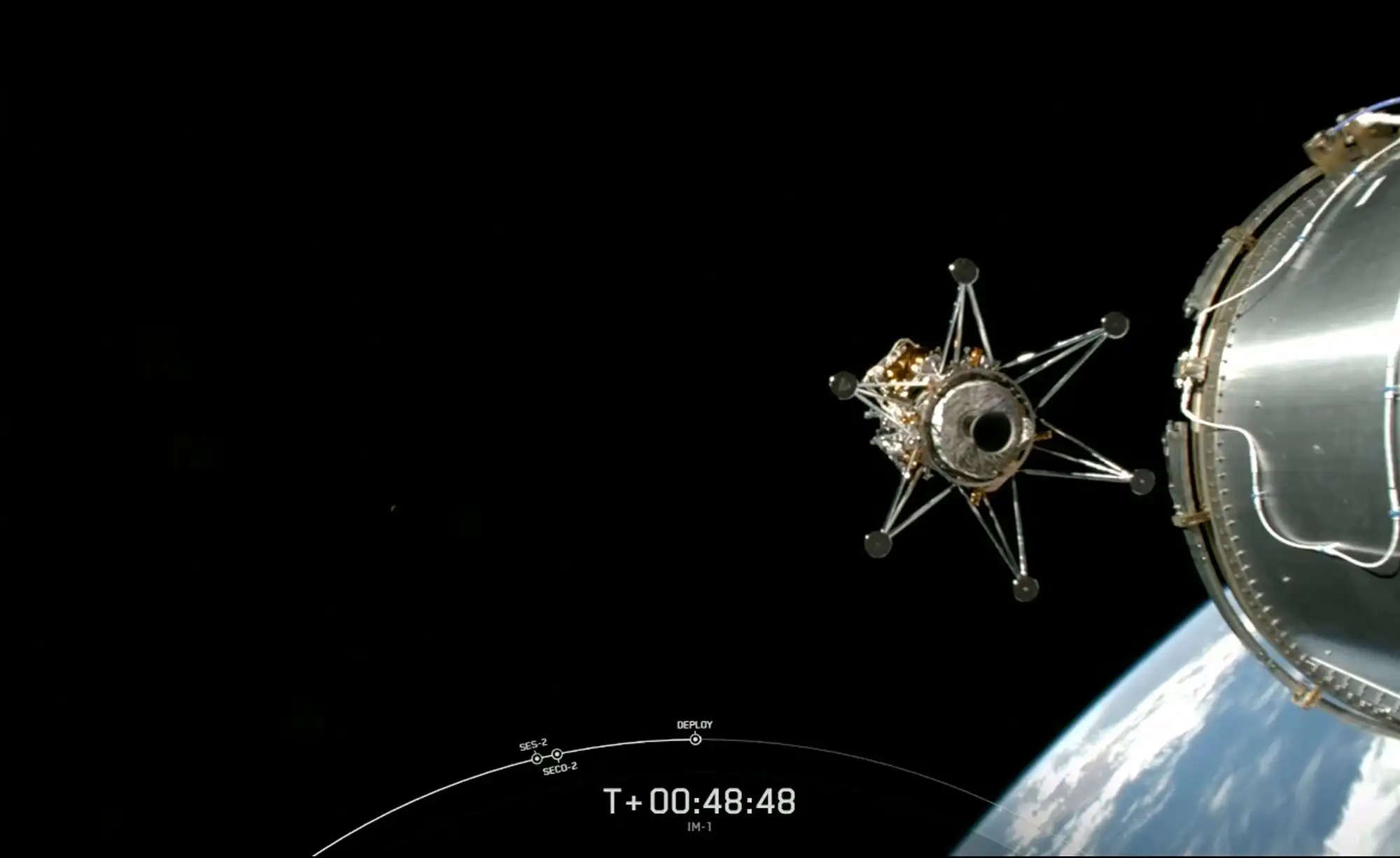Space Odyssey Interrupted: Odysseus Craft Enters Slumber Mode After Bumpy Lunar Landing

Following an uneven landing one week ago that hampered its operations and scientific aims, Odysseus, the first spacecraft from the United States to land on the moon in half a century, lost power and became inactive on Thursday as it entered a freezing lunar night. This brought an end to its fundamental mission, which had been ongoing since the previous week.
The ground control team of Intuitive Machines, an aerospace firm located in Texas that was paid $118 million by NASA to construct and operate Odysseus, said that they had received a last "farewell transmission" from the spacecraft before it went dark on the moon's south pole area.
Odie, good night to you. "We hope to hear from you again," Intuitive wrote in an online post, referring to the spacecraft by the moniker that its developers had fondly coined for a lander that they claimed proven to be more effective than they had anticipated.
Earlier in the day, Intuitive said that its engineers will programme Odysseus to "phone home" to the company's ground control centre in Houston if and when the spacecraft acquires sufficient solar power to reawaken in three weeks with the next dawn over its landing location. This would make it possible for the spacecraft to return to Earth.
It was originally stated by the business that Odysseus would most certainly run out of battery power somewhere during the evening of Wednesday, just after its sixth full day on the moon. This was due to the sun sinking low on the lunar horizon, which caused solar energy regeneration to lack adequate capacity.
However, Intuitive reported on Thursday morning that Odysseus was "still kicking," and that flight controllers will attempt to download a last stream of data that had been sent to Earth from a distance of 239,000 miles (385,000 km) before communication was lost.
Intuitive's shares, which had almost quadrupled and then fallen in wild swings throughout the course of the mission, stayed up around 20% from immediately before the launch, giving the business a market worth of over $600 million. This was the case despite the fact that the mission had already been completed.
Elon Musk's SpaceX provided the Falcon 9 rocket that was used to launch the six-legged Nova-C-class lander on February 15. The lander, which was fashioned like a hexagonal cylinder and stood 13 feet (4 metres) tall, was launched from the Kennedy Space Centre in Florida located in the United States of America. Six days after that, it arrived in orbit around the moon.
The spacecraft arrived on the surface of the moon on Thursday, following a navigational error that lasted for eleven hours and a nail-biting fall that culminated with Odysseus grabbing one of its foot on the ground and landing in a steeply skewed position, which instantly hampered its functions.
Human mistake, according to Intuitive Machines, was the cause of the navigational problem we were experiencing. Flight preparedness teams had failed to manually release a safety switch before to launch, which prevented the subsequent activation of the spacecraft's laser-guided range finders. As a result, flight engineers were forced to invent an alternative in a hurry while the vehicle was in lunar orbit.
The last-minute workaround most certainly averted a crash landing, but it may have contributed to the vehicle landing askew. According to business authorities, the vehicle seemed to snag a foot on the uneven terrain and came to rest tilting at an angle of thirty degrees.
It was on Wednesday that a photograph was made public that showed the spacecraft as it was touching down on the surface, with its landing gear clearly showing signs of damage.
According to the corporation, two of the antennas on the lander were damaged to the point where they were rendered inoperable, and the solar panels on the lander were situated in the other way.
NASA has reported that it was able to collect some data from all six of its research payloads that were delivered by Odysseus. This was accomplished despite the fact that there were continual challenges in connecting with the lander and maintaining the solar batteries' charge.
Executives from both Intuitive and NASA lauded the research that was accomplished as well as the "soft" lunar landing itself as a significant step forward in a new chapter of lunar exploration. This was the first time that a space craft that was developed and operated by a private enterprise has ever successfully landed on the moon.
In addition, Odysseus was the first spacecraft from the United States to successfully complete a controlled descent to the surface of the moon since the Apollo mission, which was the last crewed trip to the moon in 1972.
In addition, it was the first mission to be carried out by NASA's Artemis programme, which has the objective of sending a number of more commercial robot landers to the moon for the purpose of conducting scientific reconnaissance missions in advance of a scheduled return of people to the sole natural satellite that orbits the Earth later this decade.
To this day, only four other nations' space agencies have ever succeeded in performing a "soft" lunar landing. These nations include the former Soviet Union, China, India, and Japan, which only a month ago had a lander that also flipped over on its side.
The United States of America is the only nation in history to have successfully transported people to the surface of the moon. The following individuals contributed to this article: Joey Roulette in Washington and Steve Gorman in Los Angeles; Andrew Heavens, Lisa Shumaker, and Lincoln Feast were responsible for editing.
